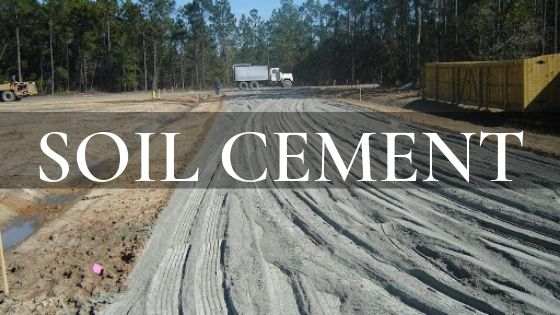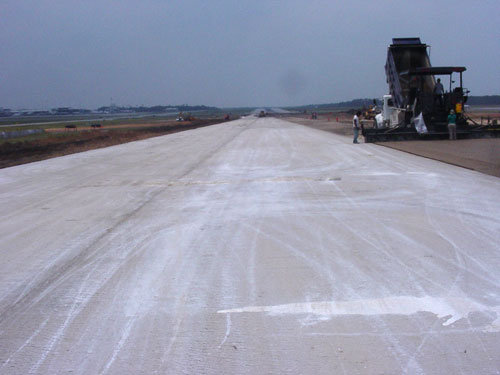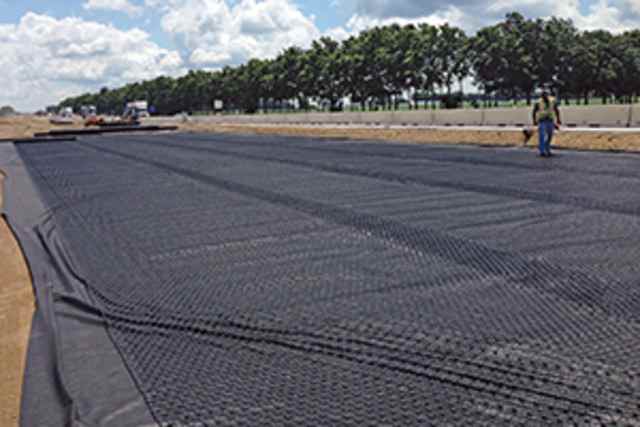
Soil-cement is a mixture of soil and measured amount of cement, and water compacted at high density. They all together form a hardened mixture like concrete, under the hydration action of cement.
It is generally used as a low-cost pavement base for airports, parking areas, residential streets, roads, shoulders, and materials-handling and storage areas. It has great strength, durability and low first cost to make it the outstanding value in its field. A thin bituminous surface is mainly placed on the soil-cement to complete the pavement.
Soil-cement is also called the cement-stabilized base, or cement-treated aggregate base.
Soil-cement Applications
Soil-cement is primarily used as a base course for-
- Roads
- Airports
- Shoulders
- Parking Areas
It is also used for:
- Sub-base for rigid pavements
- Slope protection for earth embankments and dams.
- Foundation Stabilization
- Channel and Reservoir lining
How is Soil-Cement Manufactured?
Before the beginning of construction, simple laboratory tests are done to establish the cement content, compaction, and water requirements of the soil material to be used. Tests are made to see that the requirements are being met. Testing assures that the mixture will have the strength and long-term durability. No guesswork is involved. All the calculations are made based on specific tests. This would ensure attainment of strength as well as long term durability.
Main processes involved in the construction of soil-cement are:
- Mixing
- Compacting
- Curing
Mixing
At the central mixing plant, mixing of the soil-cement mixture is done. The final mixture is then moved to the job site and laid over the already prepared sub-grade level.
Initially, a proper quantity of cement is being spread over the soil and mixed homogeneously. Then a measured amount of water is added and mixed thoroughly. The mixing can be done by hands or with mixing equipment or machines.
Compaction
Now the compaction of the whole mixture is done by normally used compaction equipment. The compaction is done with high precision to achieve the maximum advantage of the cement used.
Once it is done, the whole mixture layer is cemented permanently at a very high density. After compaction, it won’t let the soil to undergo further consolidation or settlement under huge traffic.
Curing
The last step is curing. It is performed to prevent evaporation of water to the atmosphere. Proper cement hydration will be enabled only with an adequate amount of water. For this, a bituminous coating is laid over the layer and would act as a bituminous surface. The thickness of the layer can be increased if the pavement is constructed in an area with huge traffic.
Performance of Soil-cement
- Soil-cement thicknesses are less in comparison of that required for granular bases carrying the same traffic over the same subgrade. It is because the soil-cement is a cemented, rigid material that distributes loads over broad areas. The slab-like characteristics and strength like beam are unmatched by granular bases. Hard and rigid soil-cement resists cyclic cold, rain, and spring-thaw damage.
- The maintenance reports of already constructed soil-cement pavement show that they are having good service at low maintenance costs. Maintenance is very easy unlike other methods of pavement construction is a matter to be appreciated.
- Samples were taken at the installation and after a certain period. The analysis showed that the strength and other performance factors increased with age. It was found to be four times greater than the initial values. The analysis shows that they possess a high reserve strength capacity.
Advantage of Soil-cement
- It requires less maintenance cost
- It is Widely available resources.
- It is Cheap and highly economical
- Soil swelling can be reduced
- It has better weather-resistant and strength
- It can be employed for small works
Disadvantages of Soil-cement
- Formation of cracks
- It requires always to check the quantity of water
- It is not suitable for some soils
- It requires proper supervision.
Also Read: Soil Reinforcement
References: Soil-Cement


